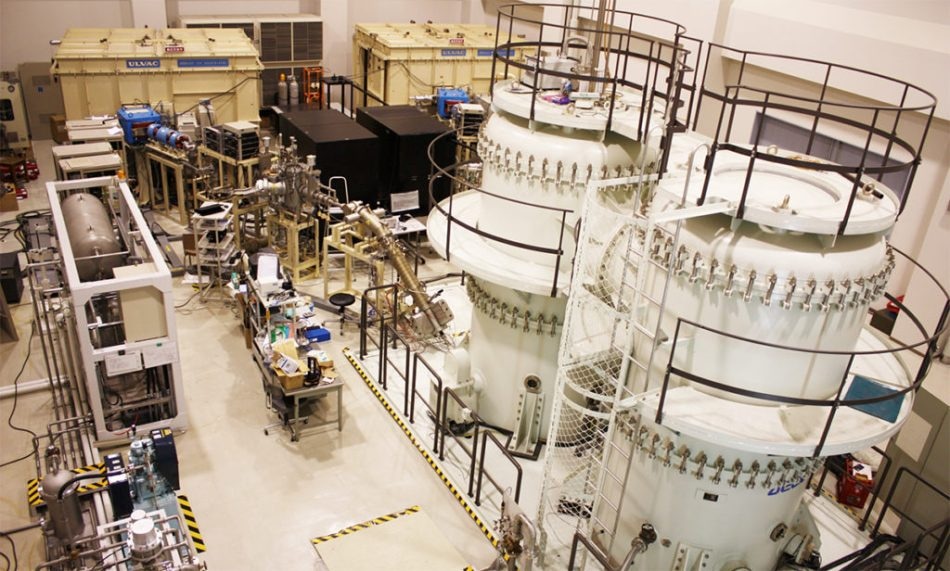Mar 30 2017
 The high voltage electron microscope at Hokkaido University used in the study. (credit: Hokkaido University)
The high voltage electron microscope at Hokkaido University used in the study. (credit: Hokkaido University)
Using Hokkaido University’s high-voltage electron microscope, an international team of researchers have solved a four-decade old puzzle regarding the atomic structure of metallic glasses.
In contrast to crystalline alloys, atoms in metallic glasses are arbitrarily organized, a structure known as amorphous. This renders them more flexible, stronger and resistant to corrosion. As a result of these outstanding physical properties, they are used in medical devices, sports equipment and electricity transformers. However, enhancing their properties requires a better insight of their atomic structure.
In 1976, researchers applied a method called differential scanning calorimetry to measure the difference in the quantity of heat needed to raise the temperature of metallic glass alloys composed of palladium, nickel and phosphorous (Pd-Ni-P). When they heated the Pd-Ni-P alloys, they discovered a thermodynamic discrepancy in the resulting curve that they could not suitably explain, but it was surely related to their structures.
Now, four decades later, the international team led by City University of Hong Kong formulated a technique that integrated a variety of measuring methods, allowing them to instantly correlate alterations in the structure of Pd-Ni-P metallic glass to temperature alterations.
High-energy synchrotron X-ray diffraction was performed while continuous heating was concurrently applied to Pd-Ni-P metallic glass at Argonne National Laboratory in the US. Individually, small-angle neutron scattering was carried out at the OPAL reactor at the Australian Nuclear Science and Technology Organization. This was complemented by acquiring electron diffraction patterns and high-resolution images of the material’s atomic structure using Hokkaido University’s high voltage electron microscope.
The collective measurements showed that Pd-Ni-P metallic glass has a concealed amorphous phase within a specific temperature range and the thermodynamic discrepancy is due to a phase transition.
The phase transition was found to involve the changes in how atom clusters were packed together. The atomic structure underwent significant changes over the medium-range length scales as large as 18Å.
Dr. Tamaki Shibayama, Hokkaido University.
His research partner Dr. Seiichi Watanabe added “This newly verified property appears to be linked to some metals’ ability to form glass, which could allow us to manipulate their structures to develop larger and stronger novel materials.”
This research was started as part of Hokkaido University’s “Top-Collaboration Support Project.”